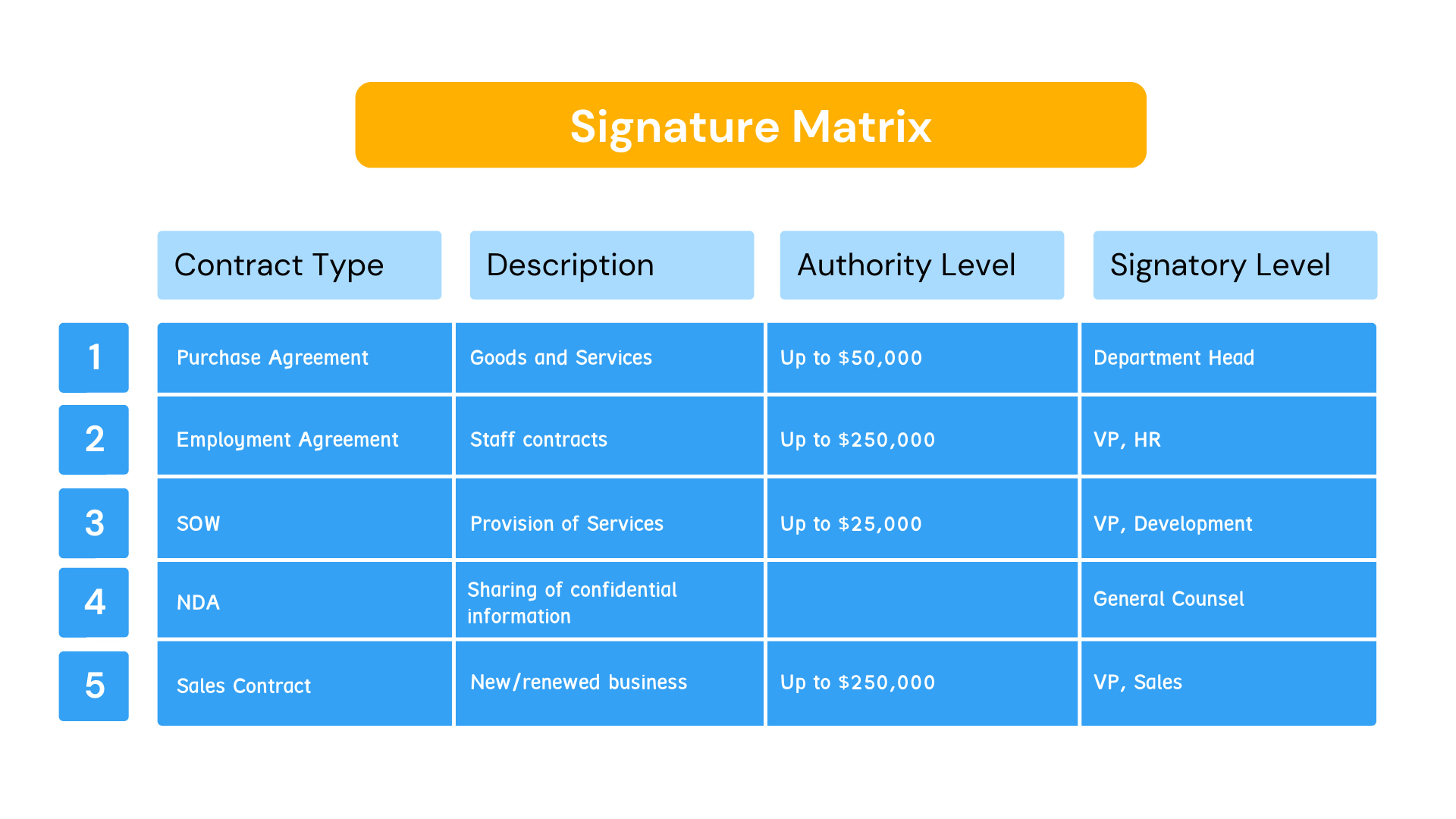If you’ve been following this blog for a while, you know I love processes. Process gives clarity to employees at all levels, and provides an outline to follow. This makes training easier and brings constituency to your company’s work, no matter who is completing a task.
Processes also evolve. If they are restrictive, make it more difficult to accomplish tasks, or confusing, they can and do change.
Today, we’re going to talk about approval and signature processes. When clear processes like these are in place, they can save time, money, and a lot of headache.
Contract Approval Processes
The key to successful contract approval processes is that they must be clear, and they should reduce touchpoints when possible.
When high-level employees are spending their time approving simplistic agreements like NDAs and other low-value contracts, they aren’t free to use their time on high-value work. Removing them from the approval process for contracts that don’t require executive-level or director-level input saves time and increase productivity positively impacts the bottom line.
Other than removing general approvals for simple agreements, contract approval processes indicate when contracts qualify for additional approvals based on transaction amount, marketing clauses, and more. Here are a few elements of contracts that may send a contract through additional approval processes:
- Contract value/transaction amount.
Different levels of financial approval may be necessary based on the value of a contract. Creating a grid for who should approve based on the contract amount will make this process very clear. An example is below:- $0-$500: No finance approval needed.
- $500-$4,999: Department head approval needed.
- $5,000 – $50,000: CFO approval needed.
- $50,000+: CEO and CFO approval needed.
- Marketing clauses
When contract permit usage of IP, including logos or other trademarked materials, an approval from an internal marketing rep may be required. This protects the company by having a marketing team member ensure that any agreements abide by brand guidelines when negotiations are taking place. Stay tuned for our upcoming post on Contract Playbooks for ideas on developing pre-approved fallback clauses during negotiations. - Special accommodations
Another use of the Contract Playbook is identifying approvals when special accommodations are made. If certain clauses can only be used with certain approvals, identifying those in the approval process is useful. If you don’t have a contract playbook yet, consider setting parameters for different accommodations so that your legal team knows what does not need leadership input, and what requires approval before negotiations can move forward.
Automation is a huge benefit to managing approval processes. While it’s always useful to have a written account of what contracts/criteria require different approvals, tools that automate approvals requests when the criteria are met remove a decision point for your staff members and allow for more consistent compliance with the procedure.
Signature Processes
There are seemingly two main conversations around signature processes right now:
- Do you have an e-signature tool?
- Do you have a signature process / grid / matrix?
E-Signature Tools
There is already a lot of information on the market regarding the benefits of e-signature tools. These tools can reduce errors, increase efficiency and save $20/document while decreasing signature time from 5 days to only 37 minutes. Needless to say, as a connoisseur of all things productivity and efficiency boosting, I’m a big fan of utilizing e-signature technology as part of your signature process. However, successfully installing an e-signature tool still depends on how you go about determining who signs which contract and why, which leads us to signature processes.
Signature Processes, Grid, or Matrices
Like approval processes, signature processes determine who needs to be involved in an agreement based on specific criteria.
While small companies may have one signatory for any kind of contract, larger companies need a more nuanced signature process. The image below outlines a simplified contract matrix.

These kinds of resources make it easy for those routing signatures to know where to send a contract when it is ready for execution. Additionally, when working with contract management tools, this part of the process can be automated, increasing compliance to the processes and saving attorneys time.





